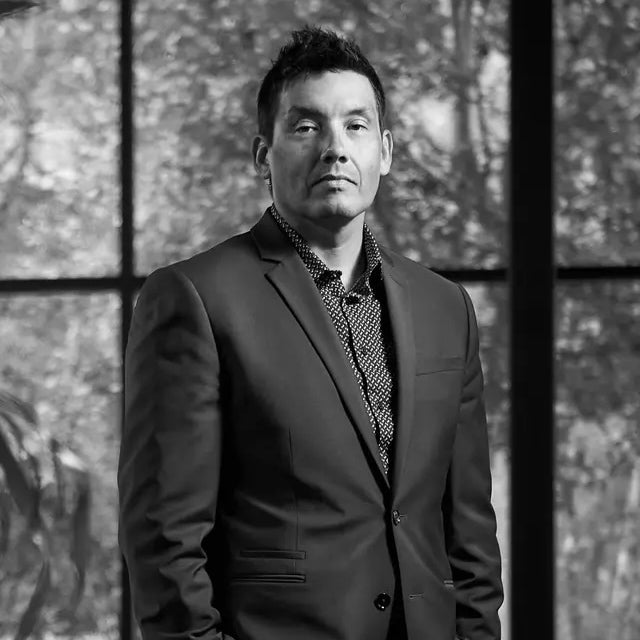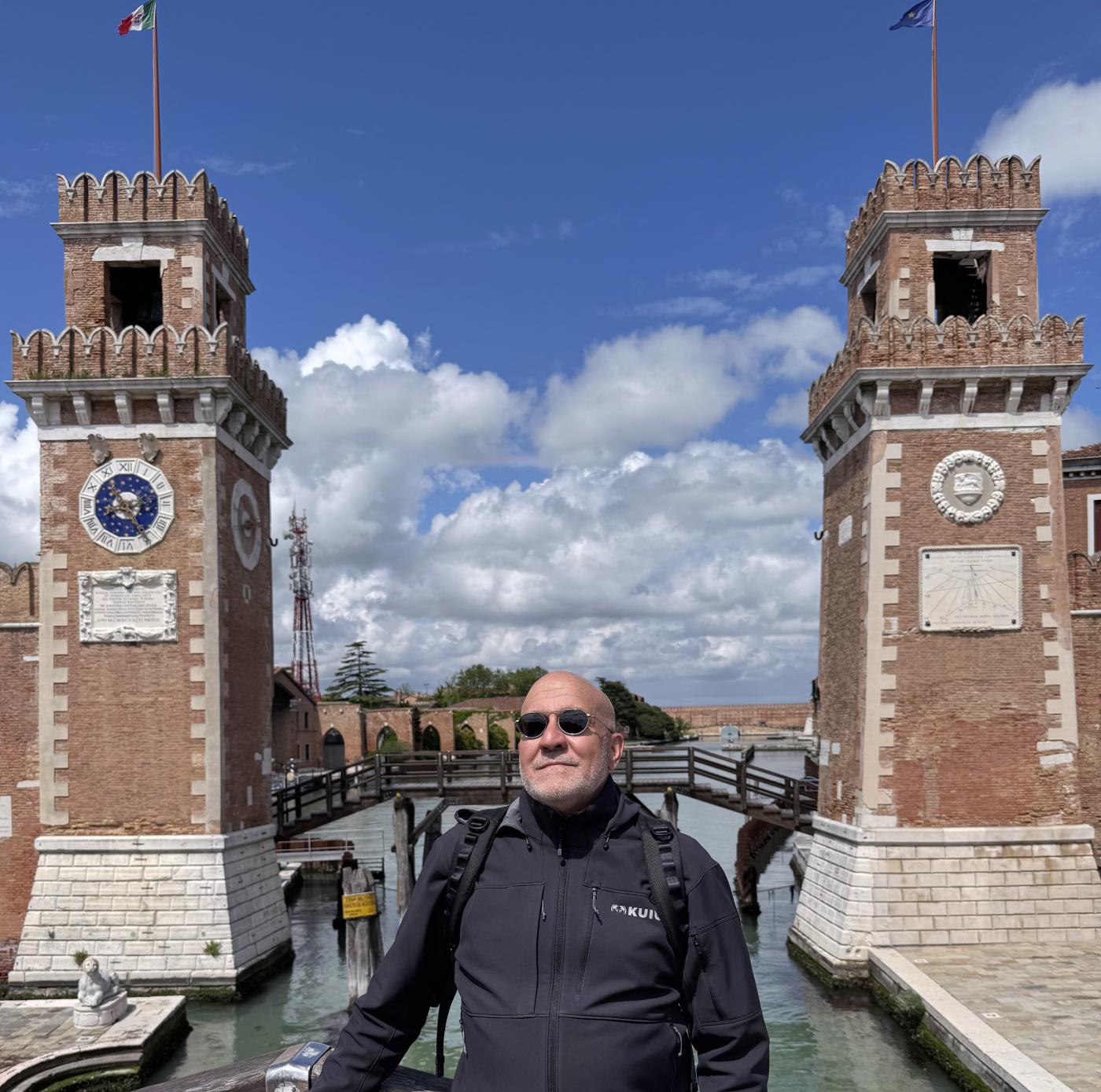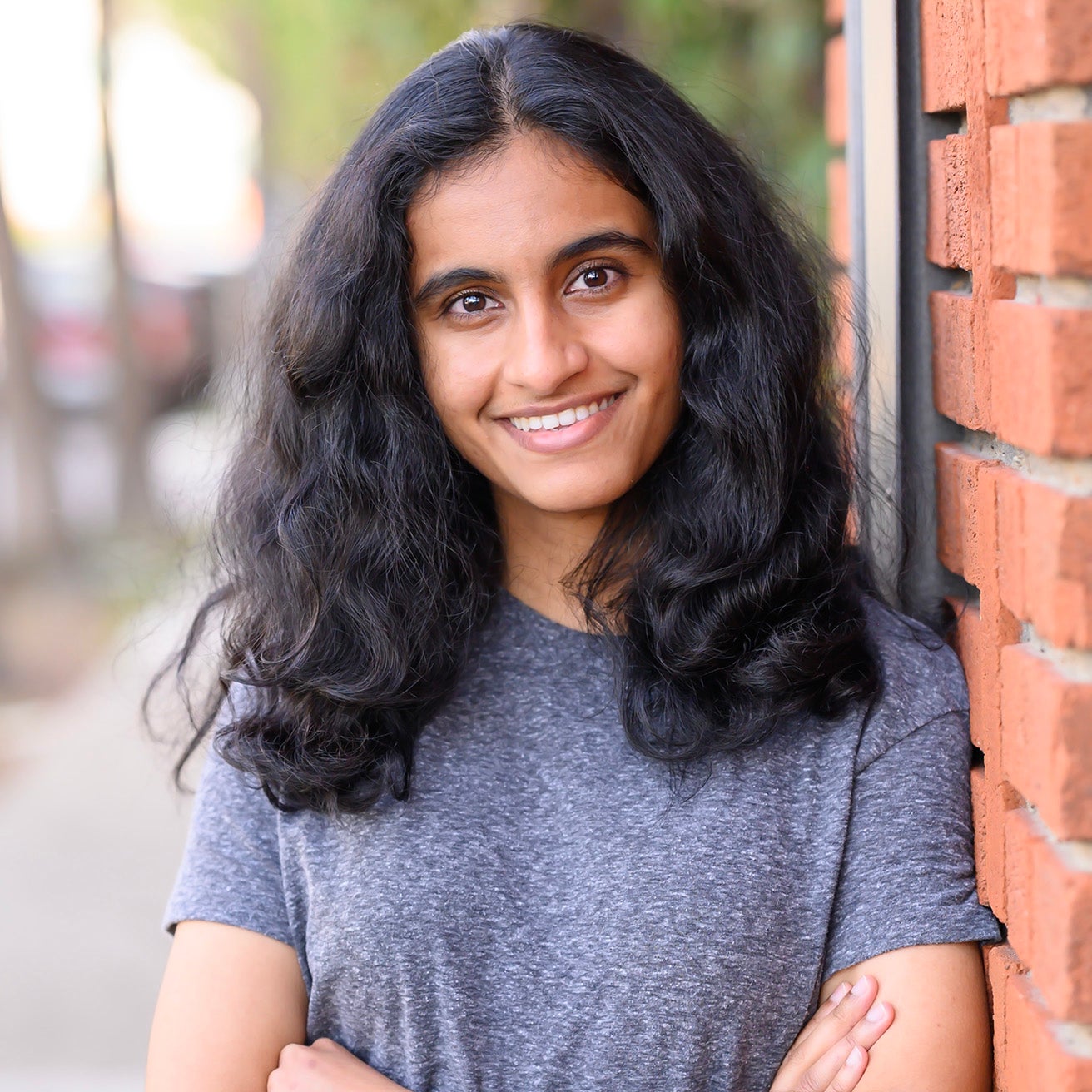
Alum in Action: William Hodges Hendrix debuts short film featuring 16 South American women architects
|
Image

|
|
| William Hodges Hendrix at the Arsenale. Photo by F. Franchi | |
William Hodges Hendrix, Assoc. AIA (MArch '85)
Design Principal and Founder, Hendrix-Studio
Last spring, William Hodges Hendrix (MArch '85) and Francesca Franchi were invited to the 19th International Exhibition of La Biennale di Venezia, curated by Carlo Ratti. Their contribution to the biennale, a short film and exhibition, premiered on May 10, 2025. This year's La Biennale, themed Intelligens. Natural. Artificial. Collective., invited different types of intelligence to work together to rethink the built environment. Curator Ratti described the featured works as "experiment(s) with intelligence beyond today’s limited focus on AI and digital technologies" and a demonstration of how we can adapt to the world of tomorrow "with confidence and optimism."
We asked Hendrix to share more about how the short film came to be, what led him to filmmaking, and his experience participating in the La Biennale di Venezia.
You and your partner, Francesca Franchi, were recently invited to participate in the 19th International Exhibition of La Biennale di Venezia, curated by Carlo Ratti. Your short film titled “Intelli-femina-gens from the Global-South America” premiered there alongside an exhibition, both of which featured South American women architects. How did this project come about?
The idea of submitting to the Venice Biennale emerged following the successful "4x4=16 South American Women in Architecture" lecture series, aiming to share the four films about these 16 remarkable architects.
After Carlo Ratti was announced as curator of the Biennale 2025, we contacted him about the idea of creating an exhibition centered around the four 60-minute 4x4=16 films. With his encouragement, we applied to La Biennale 2025. The theme of “Intelligens”, especially “Collective Intelligens” resonated with the work of the 16 South American women architects and the notion of these women creating and collaborating with their local community.

Our proposal transformed our previous work into a single film titled “Intelli-femina-gens” from the “Global-South-America”. The single short film interconnects the paths of these women architects practicing in four unique countries (Argentina, Peru, Chile, and Brazil) with diverse geographic, cultural, and social contexts. These sixteen architects include designers, practitioners, educators, government policy makers, and activists, bringing an inclusive, diverse dialogue from the “Global South America”.
The conversations in the projects and films range from innovative practices that utilize low-tech ancestral design techniques to address regional challenges to government decision-making strategies for implementing collective public policies focused on infrastructure and urban-rural planning.
In short, the film explores how these architects have integrated natural, artificial, and collective “intelligens” into their work.
Before the Biennale, our project was selected by Rai5 (Italian television) to be part of a documentary film “Save the Date”, which aired on May 30, 2025. The program featuring the Venice Biennale President Pietrangelo Buttafuoco and curator, architect, and engineer Carlo Ratti, explored the ideas behinds the Biennale titled “Intelligens. Natural. Artificial. Collective.” which invited collaboration between different types of intelligence to rethink the built environment.
_________
The Biennale film was an adaptation of the four-part series “4x4=16 South American Women in Architecture” with a focus on a creative understanding of indigenous construction methods, harmoniously integrated with the contexts of Argentina, Peru, Chile, and Brazil.
Tell us more about this series and a few of the methods that the architects that you highlighted employ.
It began with the"4x4=16 South American Women in Architecture" lecture series which was hatched in 2022 by two colleagues, Francesca Franchi and Paula Lavarello, from Peru and Argentina, respectively.
The goal was to create a lecture series to feature the work of known and unknown South American women architects, their work, and their unique approach to the discipline of architecture. My involvement in the project began shortly thereafter. As co-chair of the DC Chapter AIA Design Excellence committee, I supported the project through our committee and contributed to the creative and technical team that made it happen.

The project was formalized into a four-part lecture series featuring four women architects representing, as mentioned, four different countries: Argentina, Peru, Chile, and Brazil. The format of 4x4=16 was a 90-minute session that included three parts: an introduction, a 60-minute film, and a curated live/video panel discussion with the architects. A key tenet of the project was to have each of the 60-minute movies created in the respective countries, at locations with architectural and cultural significance, and with local filmmakers (details shared below).
The 16 architects' diverse work and interactive dialogue share unique insight into architecture.
The work highlights the creative knowledge of indigenous construction methods and the juxtaposition of tactile, low-tech construction materials echoes the design process of our architects: the co-evolution of sophisticated, perfect design and raw, imperfect materiality.
Through notions of rustic modularity and prefabrication based on reclaiming native materials, these architects achieve, above all, an uplifting and primary approach to the endless desire to connect with the materiality of nature.
Examples like the Farm Pavilions located in the Sierra de Cordoba (Argentina), the SESC 24 de Maio in São Paulo (Brazil), the Hotel Tierra Patagonia (Chile), and the Plan Selva in the Amazon Jungle (Peru) are inspiring examples of construction methods used by the architects.
_________
You have over 40 years of experience as an architect. Have you worked on films before and what aspects of working on this project do you carry into architectural practice and vice versa?
Before the 4x4 project, I did not have filmmaking experience. It was a learn-as-you-go process facilitated by hiring experienced local filmmakers and developing editing skills through collaboration with professional editors. The result was an organic quality and technical improvement from the first to last film in the series.
By the time of the Biennale 2025 project, I had enough experience to be the technical director and work with an outstanding filmmaker and editor, Asiel Nunez from Lima. Besides filmmaking, the project required graphic design and web design to support the exhibition in Venice, which also involved learning as you go.
For me, architecture is never static; it is a series of sequential experiences unfolding through time, light, and motion. The parallels between film and architecture have been written about by many.
The biggest lesson from this project was how critical in-person dialogue between architects is. Capturing dialogue between these architects on film and then editing the content to emphasize and clarify that dialogue was highly challenging and extremely rewarding. It is the same, and “the same” as the design process.
_________
If you take moment to look back, what do you continue to take with you into your professional life — especially in relationship to this project — from your time as a student at the A-School?
My 3-year experience in the A-school took me in several directions. The obvious direction was in architecture, where my A-School experience and the scholars I engaged with provided a foundation for critical thinking, rigorous design process, and a “be curious” approach to all my endeavors. As I near the horizon of a 40+ year career as design director, critic/lecturer, and firm leader, I am pleased to note that the A-School foundation was firmly placed and still influences me today.
Upon learning about the design tools architects use in their creative process, which is inherently personal, abstract, and synthetic, I found a direct connection to my own design experience.
From the A-School, I took forward into my practice the rigorous desire to achieve, above all, a holistic project that emerges from its context, history, and geography.
Due to the relationship between the A-School and the UVA interdisciplinary Archaeology Program, I had the unique privilege to have a decades-long affiliation as head architect with the Archaeological Excavations at Morgantina in Sicily. Working with Dr. Malcolm Bell III (Faculty Emeritus) and many other scholars, I gained an understanding of the relationship between urban planning, architecture, and culture.
The approach led me to immediately appreciate the design techniques utilized by the women architects, rooted deeply in the connection with their cultures and ancient methods of construction.

4x4=16 films
4x4=16 Argentina: “Arquitectas al Sur”, 01.04.2025, hosted at The Catholic University of America School of Architecture and Planning, film location; Casa Victoria Ocampo, Buenos Aires (Featured architects: Bárbara Berson, Mónica Bertolino, Paula Lavarello,
Inés Moisset)
4x4=16 Peru: “Territorios Diversos”, 06.06.2023, hosted at The Catholic University of America School of Architecture and Planning, film location; Huaca Pucllana, Lima (Featured architects: Elizabeth Añaños, Sandra Barclay, Patricia Llosa, Belén Desmaison)
4x4=16 Chile: “Entre Montañas y Mar”, 12.06.2023, hosted at The Catholic University of America School of Architecture and Planning, film location; Monasterio Benedictino, Santiago (Featured architects: Cazú Zegers, Loreto Lyon, Mirene Elton, Jeannette Plaut)
4x4=16 Brazil: “Pertenencia & Pertinencia”, 02.15.2024, hosted at the Embassy of Brazil, film location; SESC Pompeia, Sao Paulo (Featured architects: Gloria Cabral,
Marta Moreira, Mariana Simas, Claudia Sales)
"Intelli-femina-gens from the Global-South America" Short Film Credits
Asiel Nuñez, Creative Director and Producer, Archivo de Ideas Recibidas.
Francesca Franchi, Principal Director
William Hodges Hendrix, Technical Director
Paula Lavarello, Associate South America
James Jesmer, Assistant / Graphics
Maggie Dunlap, Assistant / Writer


